Family
How To Test Your Family’s Survival Skills

Are you looking for a challenging way to put your family’s survival skills and teamwork to the test?
Nothing will assess the grit and endurance of your loved ones better than leaving behind all electronic devices, cellphones, modern conveniences, electricity, the roof over your head, and your under–appreciated toilet seat.
That’s right, head out on your very own backpacking expedition and venture out with only the supplies you are able to carry on your shoulders.
When my husband first proposed a family backpacking trip, I thought he had finally flipped his lid. He wanted to take our family, myself and our young children included, on a backpacking adventure for two nights and three days.
Not only did he want us to trek through miles of secluded forest with all our food, shelter, and clothing needed for survival firmly attached to our own bodies, but he wanted us to go to the most secluded spot he could find within driving distance at a time of year when it would have the least number of other campers to give us aid or hear our desperate screams for help if the need arose.
We would be descending from 3400 feet down to 1200 feet to the river below, hiking a grueling ten miles and ascending 2200 feet on our return. This would prove to be a challenging physical and mental feat for our children and me, but we accepted his dare.
As a family, we had car camped before at a lovely campground with showers and other amenities. In my mind, that was hard-core survival of the fittest. And that was as far as I imagined our family going with being one with nature. However, I was coerced by my husband and our children had been enticed by him with the promise of extreme adventure.
Starting Off
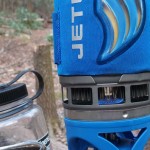
Jetboil made boiling water simple and quick.
Before setting off we had some purchases to make. Mainly, the backpacks and the tents. My husband did a lot of research and found that L.L. Bean backpacks were highly rated for the money. Upon purchasing you should pay close attention to proper fitting of the pack; it will alleviate back pain or possible shoulder injury.
The tent you need doesn’t require bells and whistles, but rather your focus should be on weight and ease of set-up. Some backpackers like to sleep in a hammock with a tarp stretched overhead. We chose tents because with children, you don’t want them spread all over the woods hanging in hammocks chattering loudly to one another late into the night. Other purchases are listed below to help guide any fellow explorers.
He had researched everything from how to hang a bear bag to how to splint a broken bone. Once we had all our supplies, we had to pack the bags and weigh them, keeping in mind that a person can only reasonably carry 25% of your total body weight. I tried to claim I only weighed 75 pounds, but my husband wasn’t buying it. Each of us carried our own sleeping bags, padding and clothing.
Carrying your own clothing definitely quells the temptation, as a woman, to pack more than I needed. The only toiletry I afforded myself was deodorant and a toothbrush. The weight of our tents and padding obviously had to be distributed to the adult packs. We tried making the kids carry their own, but they kept falling backwards so we relented and took the bulk of the weight.
Some important things we learned from backpacking:
- If you think you have enough toilet paper and there are girls in your group, think again. Pack more. It doesn’t weigh much, but it is much more enjoyable than a leaf.
- Take a water filter with water bottles that can screw onto them. We had two MSR MiniWorks water filters which fit our Nalgene water bottles and bladders perfectly. It was also fortunate that we had two because one stopped working on the second day. 2 is 1 and 1 is none.
- Don’t pack a 5lb bag of Costco trail mix. It sounds like an appropriate food choice, but it is too heavy for one person to carry. Break this out into individual bags and let each person carry their own serving. This was the last thing we ate.
- If you have a bad back, suck it up and purchase ample inflatable padding. My husband had purchased the simple military style foam padding roles and they weren’t enough to block out the rocks and roots on the trail. An inflatable mattress costs more, but it is lightweight and will keep you from aches and pains that could impede your progress and make you a miserable companion.
- Pack a GPS and a map encased in a Ziploc baggie. Even if you are an expert ninja tracker, it is an excellent time to teach others in your group how to navigate. We let our children take turns getting us to the next camping spot (with our guidance) and this allowed them to learn how to read a map and recognize their surroundings.
- Your camp stove can make life easy or very difficult. We used a Jetboil for quick cups of coffee and effortless boiling of water (usually under 2 minutes) for our freeze-dried food. As an added bonus, this handy dandy invention will allow you to boil water if your filters go out, too. We took one canister of fuel and a spare, but didn’t even use 1/2 of one canister.
- Lastly, but not least, first-aid is crucial. Pack a light and basic kit. We ordered this ultra-light kit from Amazon. You will need to play through every possible scenario in your mind and be prepared to make do with the supplies you are able to carry. We also packed a couple of extra trauma bandages and cut out some band-aids.
Into the Woods
The trek into the place where we wanted to camp took a lot of effort and teamwork. It was a steep incline and the small rocks under our feet proved treacherous; especially with the extra weight on our backs. We strongly advise anyone taking children on backpacking exploits to go over all the details and safety guidelines weeks before the trip.
I have always found that if you prepare them for the worst it will pay off with fewer accidents and aggravations. We additionally drove home the well-known fact that whiney kids will attract vicious wild animals because any high-pitched exasperating sounds can be incorrectly mistaken for injured prey. We recommend that you build multiple breaks into your destination time because smaller children need to stop more often to rest.
Our site was near a beautiful river with rocks that the kids could climb on. Our tents were easy to assemble and set up and it was glorious to finally peel the packs off and devour a hot meal.
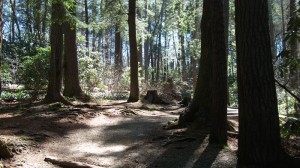
This was our home for 3 days.
That night, we listened to nothing but the sound of the forest and the roaring river as we drifted off to sleep. And let me be clear, you will not sleep as well as in your own bed on a Tempur-pedic mattress, but you will be comforted by the fact that you don’t have to sleep with the pack on. After awaking early in the morning and having coffee by the campfire (is there anything better?) we set off for the next site.
Along the way, we prattled about everything under the sun, sang some ridiculous songs, admired nature, and discussed the effort it took to survive without the luxuries of home. There were moments where we crossed over dangerous narrow paths, stepped dangerously close to venomous snakes, and we had to help another up after they took a nasty spill. Our kids also learned invaluable lessons about survival, such as, how to make use of what nature provides, work together, and follow directions.
If you ask any of our children what one of their favorite family vacations was, they will always fondly recall our first backpacking trip and we can be somewhat assured that if push came to shove, our family could thrive when thrown into any unknown circumstance where we depended on one another for survival.
Click here to view the original article
32 Survival Skills to Teach Your Kids
5 Survival Skills You Can Practice While Camping
13 Top Survival Skills | Learn Now, Survive Later
-

 Do It Yourself7 months ago
Do It Yourself7 months agoParacord Projects | 36 Cool Paracord Ideas For Your Paracord Survival Projects
-

 Do It Yourself9 months ago
Do It Yourself9 months agoHow To Make Paracord Survival Bracelets | DIY Survival Prepping
-

 Do It Yourself9 months ago
Do It Yourself9 months ago21 Home Remedies For Toothache Pain Relief
-

 Do It Yourself10 months ago
Do It Yourself10 months agoSurvival DIY: How To Melt Aluminum Cans For Casting
-

 Exports8 months ago
Exports8 months agoAre Switchblades Legal? Knife Laws By State

![Feature | Men's wearing black drinking water in the mountain | How To Stay Hydrated While Hiking [ Video]](https://survivallife.com/wp-content/uploads/2016/05/Mens-wearing-black-drinking-water-in-the-mountain-Stay-Hydrated-us-Feature-.jpg)

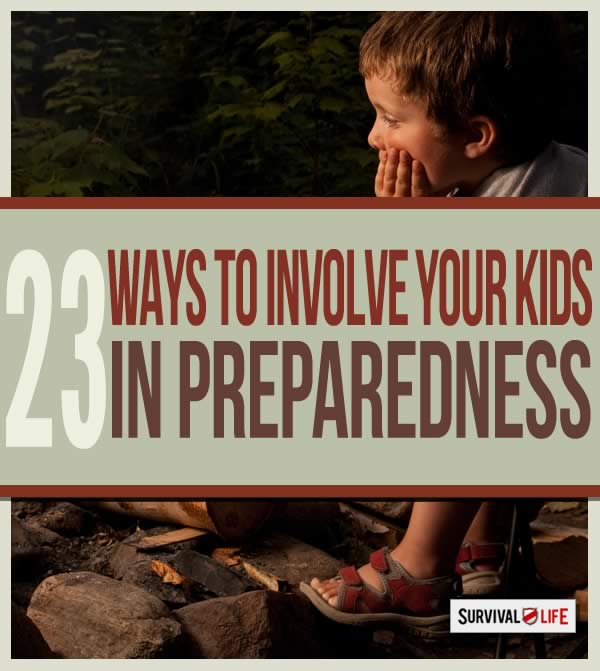
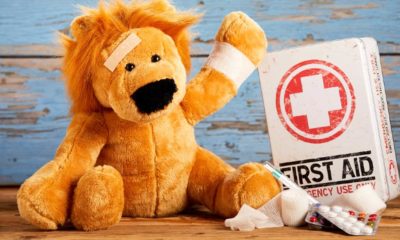

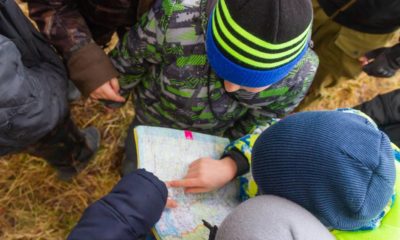

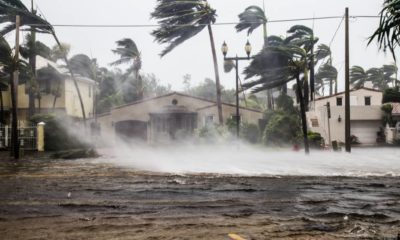


Jeff
April 25, 2013 at 11:31 AM
We have taken annual backpacking trips with our kids since they were 2 1/2 and 4 1/2. This is one of the best times the kids ever have and they look forward to it every year. They have provided hours of enjoyment to us and we would not miss it. We plan to backpack and climb a 14’er with them this year. They started car camping when they were 4 months old. Get them out and let them experience the wilderness. Let them get dirty and have fun. They will come up with the greatest games and entertainment available!!
Robyn
April 25, 2013 at 12:04 PM
Our 4 children were raised in recreational off-grid backpacking trips. When they were toddlers we’d tether them to a tree, cleared all the moose turds from their perimeter, couldn’t reach fire or creek, worked great! When my girls applied for out of state Girl Scout events, they always qualified for camping as their skills were considered “primitive” (this is good) due to living in Alaska. To this day they are great shots, great campers, know outdoor survival skills & can out do any of their friends male of female in any emergency situation. Now we’re training the grandkids! And don’t forget to learn the edible plants in your area too.
Jim28Reg
April 25, 2013 at 6:29 PM
I’ve been trying to get the lady boss to take an excursion with me as there’s a lot of woods in our area and it’s always no. Looks like I’m going to have to do it on my own as YOU ARE MAKING ME SOOOO JEALOUS.
ski
April 25, 2013 at 7:09 PM
How about eating some of the stuff you found on your journey?? Mama nature provides a lot of food so you can pack a whole less.
ron
April 25, 2013 at 8:33 PM
sounds like all of you had a great and safe trip. thank you
for sharing your adventures.
ron
face
April 26, 2013 at 1:00 AM
good god,you call 10 miles in 2 days and 3 nights(i’m not sure if you got that backwards or camped next to the car the last night)is “grueling”?especially all downslope?if your kids are 10 or older i might suggest building up to at least 15-20 miles in 3 days and covering some ridgeline doing it,you’ll be pleased with the outcome if you make these hikes a regular thing like once a month.when in my 20s we used to cover 30-35 miles ridgewalking in a weekend,usually covering 4-6 peaks in all the major mountain ranges along the east coast,mostly along the appalachain trail.we never had dehydrated food or air mattresses,but we were comfortable.if you’re going to camp in a tent the first thing you need to learn is how to set it up and i’m not talking about the instructions.if in mostly hardwood forest pick higher ground than that around you and pile up at least 1-1 1/2 ft of leaves where you’ll set the tent,and pull out the twigs and branches.next when you have your tent set up on the cushion scrape a ditch a couple of inches deep and wide all around your tent with a strip going at least a foot away on the lowest side/corner of the tent so you don’t wake up in a pond.just these 2 simple things will make you more comfortable and save pounds of extra carry.we also used to freeze some steaks and when you finish the first day afoot they’ve just thawed out and you have one divine meal the first night out.if you want to learn survival skills a small relatively short and easy hike doesn’t teach you.just like with any other exercise you need to push to gain.
Cornelia Adams
April 28, 2013 at 8:13 PM
At the time of our adventure, our kids were 8 and 10 and these were not trails. We climbed over boulders and had to help one another over giant trees. The downslope was extremely steep and covered with tiny little rocks that gave way quite frequently. Not to mention, we did want our kids to have good first experience so we spent quite a lot of time playing by the river. We are not hardcore campers or backpackers by any stretch, but we came away feeling like we had tested ourselves.
richard1941
April 27, 2013 at 2:38 AM
I don’t understand why you carried so much deadweight. Tents? Why do you think you need them? Yeah, they are nice and comfy, but not at all needed for survival. In rain you can improvise a shelter with paracord and tarp or even rain poncho. A lot less weight.
Why do you think you need deodorant and toothbrush? Your teeth are not going to fall out in three days. And stinking in part of human nature in the natural state! It makes you realize that we are animals and not plants or fungi.
Nalgene water bottles? Why? Used 16 oz soda bottles work just as well, cost nothing, and have less weight! With the soda bottles you have the option of solar treatment of water; you can’t do that with Nalgene. Also, empty soda bottles (other than coke) make great percussion instruments for evening entertainment: with the cap on, just rap the cap on a stone.
You missed a lot by not taking home made flutes or harmonica; weigh almost nothing, great for morale when you have achey breaky body.
I am with you in the inflatable air mattress; those foam pads may insulate but are worthless if there is a 1/2″ pebble underneath.
Costco Trail Mix: forget it. Just buy a big jar of luxury nuts at Costco and add dates, dried apricots, and whatever you like. OR, there is a chain of food stores in California called Sprouts Farmers Market, where you can get 57 kinds of trail mix. Avoid chocolate: it #@$%ing melts, and has artificial intelligence to melt in the worst possible place.
First aid kit: the ones in stores are worthless if you have an allergy or asthma problem. Be sure to add some benedryl. It is useful to calm the hysterical and also helps you to sleep (even if you don’t want to sleep). Aspirin is old tech, but has many uses as fever reducer, blood thinner, etc.
GPS? When civilization collapses, do you think that will continue to work? For electronics, I have a small solar panel that just fits the top of my backpack. No powerhouse, but it can keep my ham radio and cell phone charged in case of emergency. Otherwise there is a way you can always send text messages: learn morse code. (Now you know that I am a very OLD ham.) Morse works with flashlights, whistle/horn honk, hand waving, tapping on the wall of your prison cell, and many other modes.
You should try to get one of those miracle backpacks that can carry half your body weight 20 miles and will feel so comfortable you don’t even know it’s there. You can get one in the same place as a truthful politician, a doctor who listens to what’s wrong with you, a lawyer who won’t take your money, an honest realtor, and a car mechanic who will fix your car right the first time and test drive it to be sure it is right. Alas, you have to die before you get to heaven.
Good start: you got out and did it! Make a list of everything you did NOT actually use, and a list of stuff you needed but did not have, a list of equipment that failed, and adjust your gear accordingly. Then come back and post what you learn!
Confession: my favorite fire starter is still a Bic lighter. I have gotten smoke out of a firebow, but at age 12 I discovered that my dad’s drill press works a lot better. I carry a firesteel rod in my wallet, but that is NOT sustainable tech if civilization collapses. It is made of cerium, a rare-earth metal. Also, I like to camp with a Sony short wave radio.
arodz
July 2, 2013 at 12:22 PM
These kind of experiences are great, not just for the fun you can have doing them but also you could teach one or two things to your family
Pingback: Survival Skills For Kids | Family Survival Guide - Survival Life | Preppers | Survival Gear | Blog
Pingback: Calculating Your Survival Pace Count - Survival Life | Preppers | Survival Gear | Blog - Survival Life | Preppers | Survival Gear | Blog
Pingback: Survival Skills for Kids | Are Your Kids Prepared? | Survival Life |Blog - Survival Life | Preppers | Survival Gear | Blog
Pingback: Survival Skills and Hobbies That Can Save Your Life - Survival Life | Preppers | Survival Gear | Blog
Pingback: Surviving Alone: Is It Possible? | Survival Life | Blog - Survival Life | Preppers | Survival Gear | Blog
Pingback: Surviving Alone: Is It Possible? | Prepper News
Pingback: Surviving Alone: Is It Possible? | Home Preppers
Pingback: Amazing Hiking Trails You Have To See To Believe | Survival Life
Pingback: Amazing Hiking Trails You Have To See To Believe | Primitive technology
Pingback: Amazing Hiking Trails You Have To See To Believe – Ultimate Survival Alerts
Pingback: 22 Amazing Hiking Trails You Have To See To Believe
Pingback: 22 Amazing Hiking Trails You Have To See To Believe - Survival Patch
Pingback: Ultimate Backpacking Checklist for Beginners – Outmore
Pingback: Ultimate Backpacking Checklist for Beginners | Survival Go Bag
Pingback: Ultimate Backpacking Checklist for Beginners - Just another WordPress site
Pingback: Ultimate Backpacking Checklist for Beginners - Cooking in Quarantine
Pingback: Ultimate Backpacking Checklist for Beginners – Get OutMore!